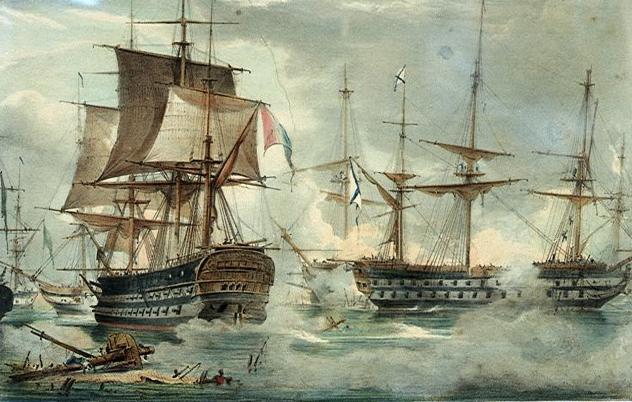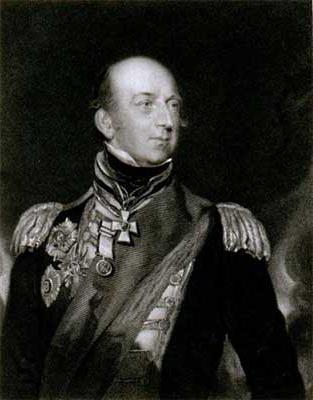The Navarino naval battle that took place on a sunny day on October 20, 1927 in the bay of the same name, is not only one of the most glorious pages in the history of the Russian fleet, but also serves as an example of the fact that Russia and the countries of Western Europe can find a common language when it comes to infringement of the rights and freedoms of various peoples. In a united front against the decrepit Ottoman Empire, England, Russia and France rendered invaluable assistance to the Greek people in the struggle for their independence.
Russia and Europe in the first half of the 19th century
The Russian Empire in the 19th century, especially after the victory over Napoleon and the Vienna Congress, became a full participant in the international political process. Moreover, its influence in the 1810-1830s. was so great that her support was sought in all more or less significant situations. Created at the initiative of Alexander I, the Holy Union, whose main goal was the struggle to preserve the political regimes that existed in European countries, has become an important tool for influencing all intra-European affairs.
One of the pain points in Europe in the first quarter of the 19th century was the gradually collapsing Ottoman Empire. Despite all attempts at reform, Turkey was increasingly lagging behind the leading states, gradually losing control over the territories that were part of its empire. A special position in this process was occupied by the countries of the Balkan Peninsula, which, with an eye on the possible assistance of Russia and other European states, began more and more actively fighting for their independence.

In 1821, the Greek uprising began. The Russian government found itself in a rather difficult situation: on the one hand, the points of the Holy Union did not allow those who advocated revising the existing situation, and on the other, the Orthodox Greeks have long been regarded as our allies, while relations with Turkey were almost always far from the optimal. At first, the rather cautious attitude to these events was gradually replaced by more and more increasing pressure on the descendants of Osman. The battle of Navarino in 1827 was the logical conclusion of this process.
Background and main reasons
In the confrontation of the Greeks and Turks for a long time, none of the parties could achieve decisive superiority. The status quo was fixed by the so-called Akkerman Convention, after which Russia, France and England actively took up the cause of a peaceful settlement. Nicholas I made it clear to Sultan Mahmoud II that he would have to make very serious concessions in order to preserve the Balkan state as part of his empire. These requirements were enshrined in the St. Petersburg Protocol in 1826, where the Greeks were promised broad autonomy, right down to the right to elect their officials to government posts.
Despite all these agreements, Turkey, at any opportunity, sought to unleash real genocide against the proud Hellenes. This ultimately forced Russia and its European allies to move on to more decisive action.
The alignment of forces before the battle of Navarino
The battle of Navarino showed that the days when the Turkish fleet was considered one of the best in Europe, irrevocably passed. Sultan and his Kapudan Pasha Muharrey Bey managed to gather very impressive forces in the Mediterranean region. In addition to the Turkish frigates themselves, powerful battleships from Egypt and Tunisia were concentrated here. In total, this armada totaled 66 pennants, which had more than 2100 guns. The Turks could also count on the support of coastal artillery, in the organization of which French engineers at one time played a large role.

The Allied squadron, whose general command of seniority was carried out by the Englishman Codrington, numbered only twenty-six pennants with almost 1300 guns. True, battleships - the main force in any naval battle of that time - they had more - ten against seven. As for the Russian squadron, it consisted of four battleships and a frigate, and it was commanded by the experienced warrior L. Heiden, who held his flag on the flagship Azov.
Disposition before the battle
Already in the area of the Greek archipelago, the Allied command made the last attempt to peacefully resolve the conflict. Pasha Ibrahim during the talks on behalf of the Sultan promised a three-week truce, which he almost immediately violated. After that, the Allied fleet locked the Turks in a series of roundabout maneuvers in the Navarino Bay, where they, under the protection of powerful coastal batteries, intended to give a general battle.
The battle of Navarino was largely lost by the Turks even before it began. Having chosen this rather narrow bay, they actually deprived themselves of a numerical advantage, since only a small part of their ships could simultaneously participate in the battle. The coastal artillery, on which the horseshoe of the Turkish fleet relied, did not play a special role in the battle.
The allies planned to attack in two columns: the British and French were supposed to crush the right flank, and the Russian military squadron - to complete the rout, leaning on the left side of the Turkish fleet.
The beginning of the battle
On the morning of October 8, 1827, the Anglo-French squadron, which was closer to the enemy, lined up in a column, began a slow movement in the direction of the Turks. Having approached the distance of a cannon shot, the ships stopped, and Admiral Codrington sent to the Turks parliamentarians who were shot from rifles. The shots became a signal to the beginning of the battle: almost two thousand guns spoke from both sides at once, the entire bay was quickly clouded with acrid smoke.
At this stage, the Allied fleet failed to achieve decisive superiority. Moreover, the Turkish shells inflicted quite serious damage, the system of Muhhari Bey remained unshakable.
Battle of Navarino: the entry of the Russian fleet and a radical change
At a time when the outcome of the battle was still far from obvious, the Russian squadron of Heiden, whose strike was aimed at the left flank of the Turks, began active hostilities. First of all, the frigate "Gangut" shot the coastal battery, which did not have time to make ten volleys. Then, standing at a distance of a pistol shot, the Russian ships entered into a fire duel with the enemy fleet.

The main burden of the battle fell on the flagship "Azov", the commander of which was the famous Russian naval commander M. Lazarev. Leading the Russian combat detachment, he immediately joined the battle with five enemy ships, quickly sinking two of them. After that, he hastened to the rescue of the English "Asia", against which the enemy’s flagship opened fire. Russian battleships and frigates behaved exemplary in battle: occupying the places intended for them in the combat formation, they carried out clear and timely maneuvers under fierce enemy fire, drowning Turkish and Egyptian ships one after another. It was the efforts of the Hayden squadron that provided a radical turning point in the battle.
End of the battle: complete victory of the Allied fleet
The battle of Navarino lasted a little over four hours and was distinguished by a very high concentration of fire and a saturation of maneuvers. Despite the fact that the battle was fought on Turkish territory, it was the Turks who turned out to be worse prepared for it. Several of their ships immediately ran aground and became easy prey. By the end of the third hour, the outcome of the battle became clear, the Allies began to compete in who would sink the ships more.
As a result, without losing a single battle ship, the Allied squadron defeated the entire Turkish fleet: only one ship managed to escape, and even that one suffered very serious damage. Such an outcome dramatically changed the entire balance of power in the region.
Summary
The battle of Navarino in 1827 became a prologue to the next Russian-Turkish war. Another result was a sharp change in the balance of Greek-Turkish forces. Having suffered such a crushing defeat, Turkey entered a period of serious domestic political crisis. She was not up to the ancestors of the Hellenes, who were able not only to gain wide autonomy, but soon achieve complete independence.
The year 1827 in the history of Russia is yet another confirmation of its military and political power. With the support of states such as England and France, she was able to profitably use the situation to strengthen her position in the European arena.